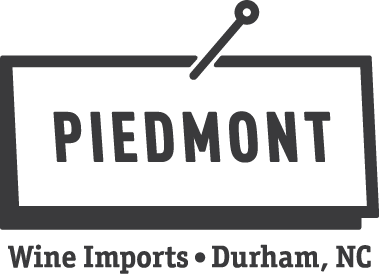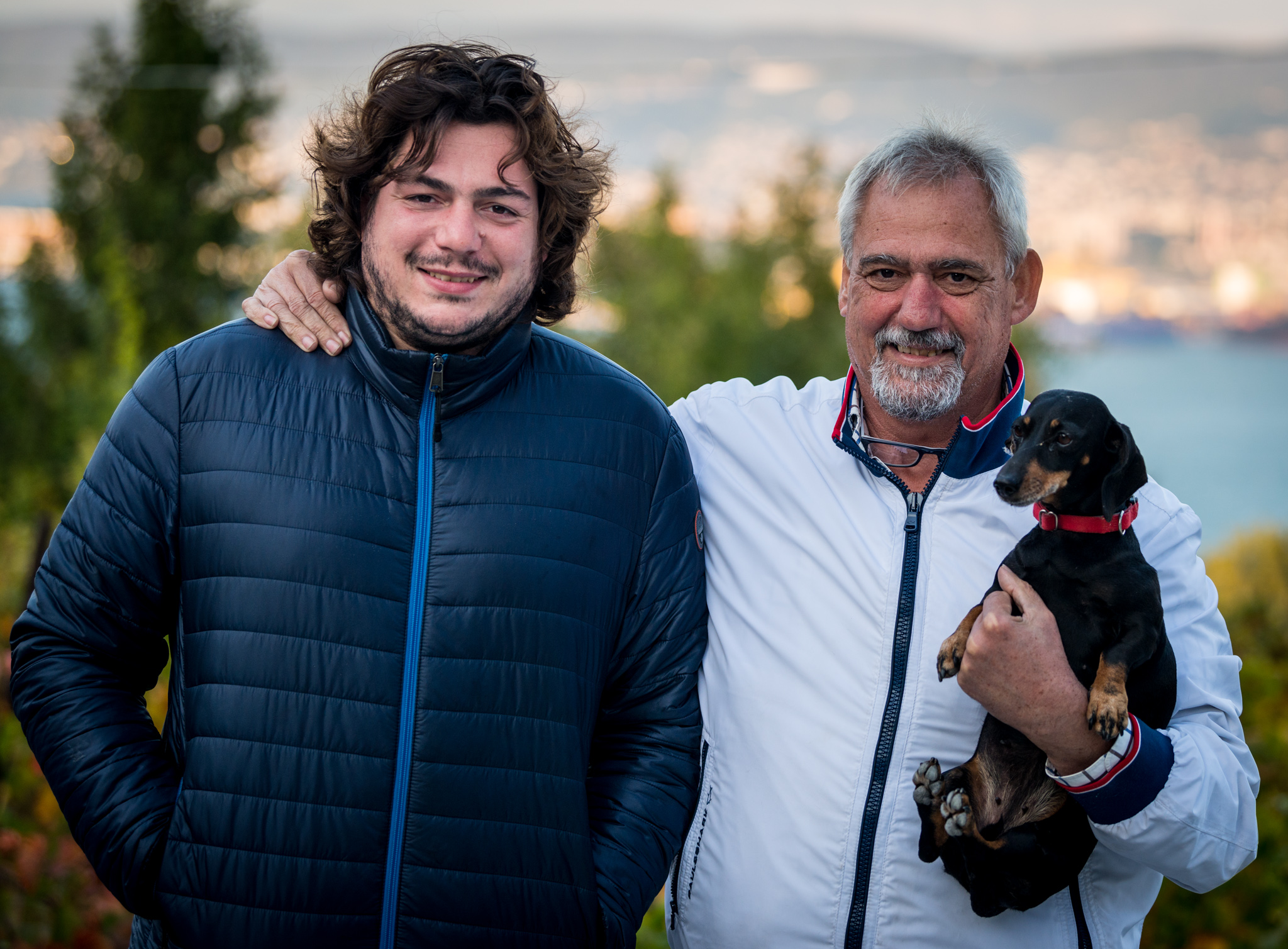
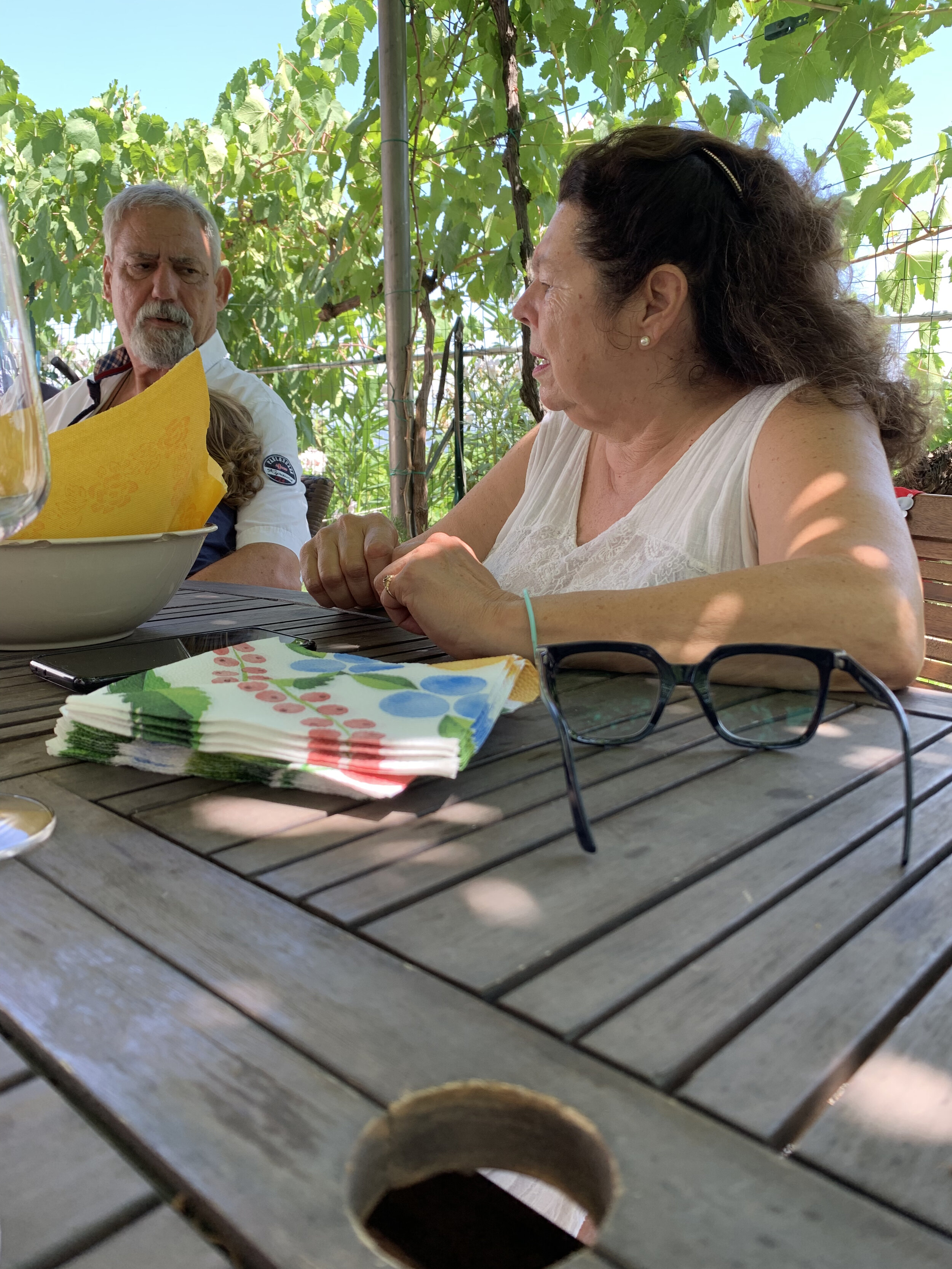
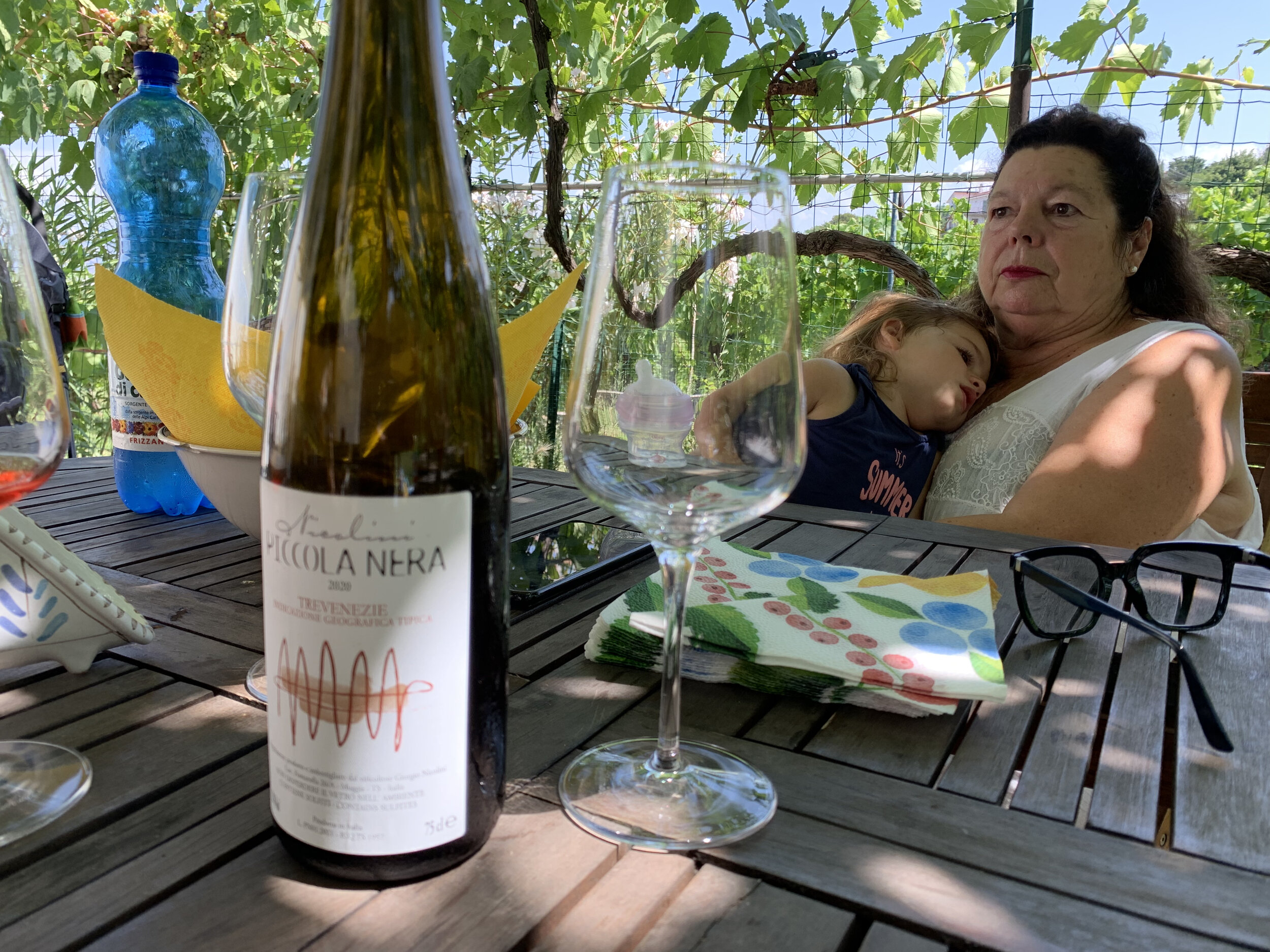
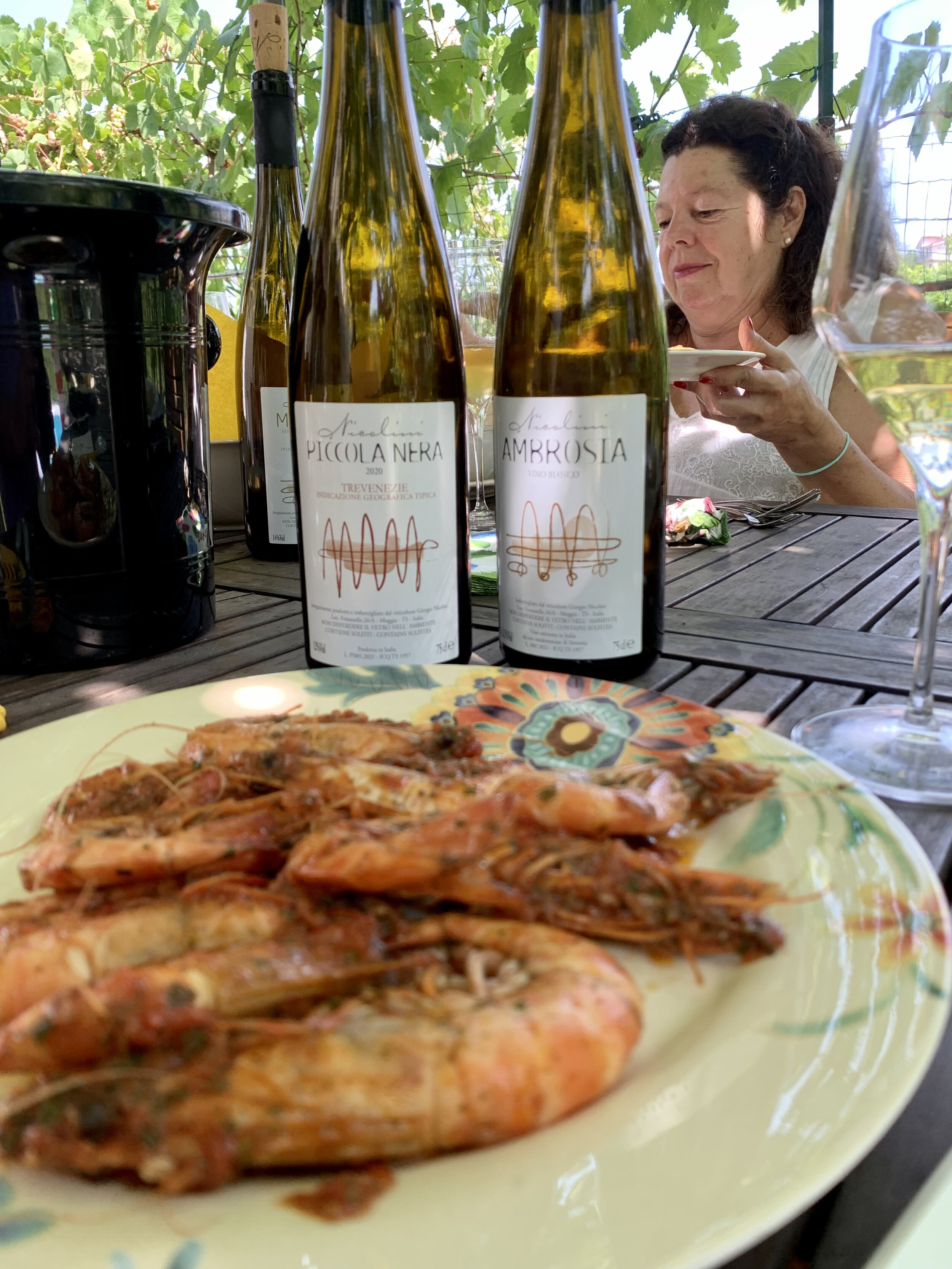
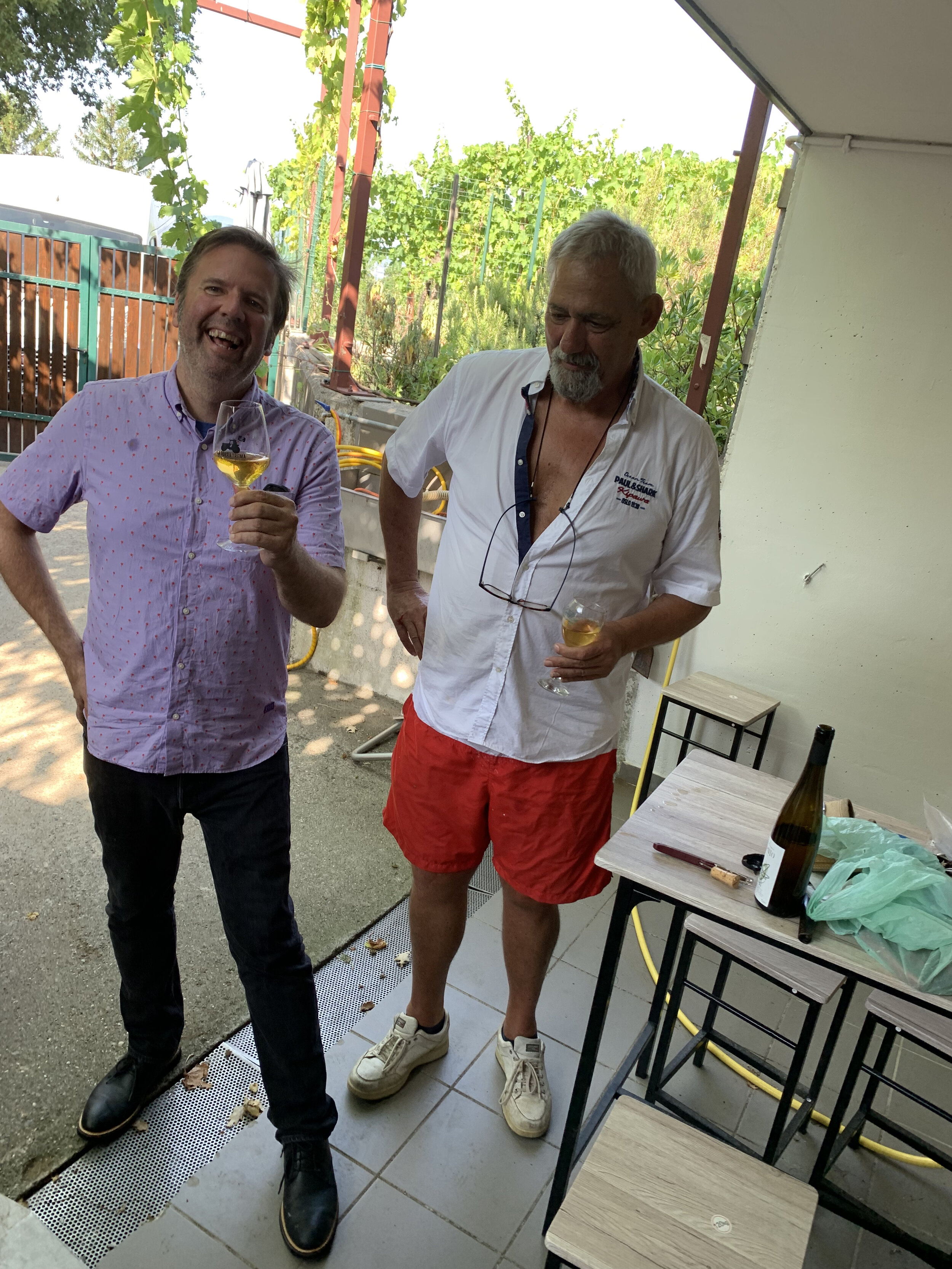
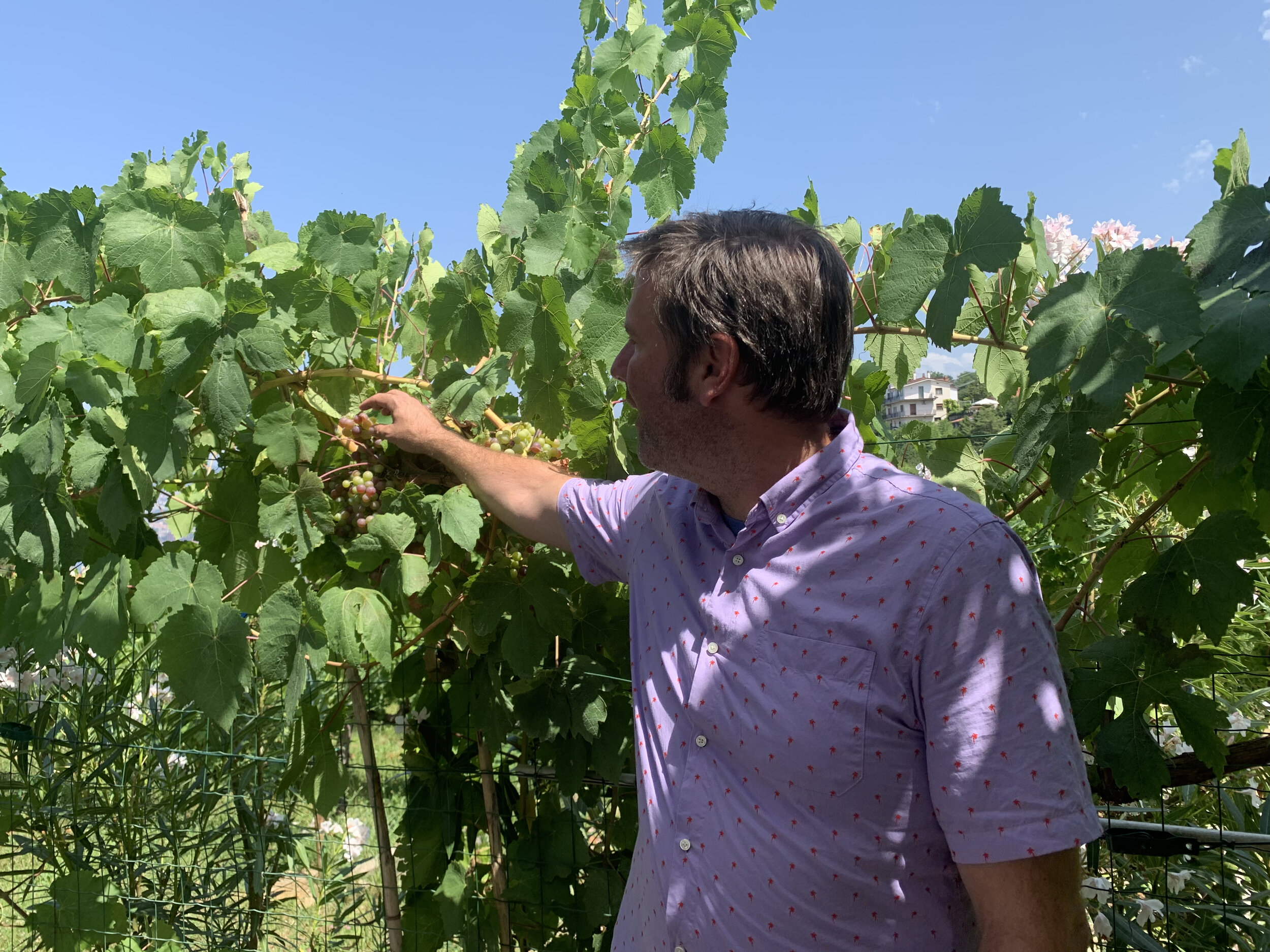
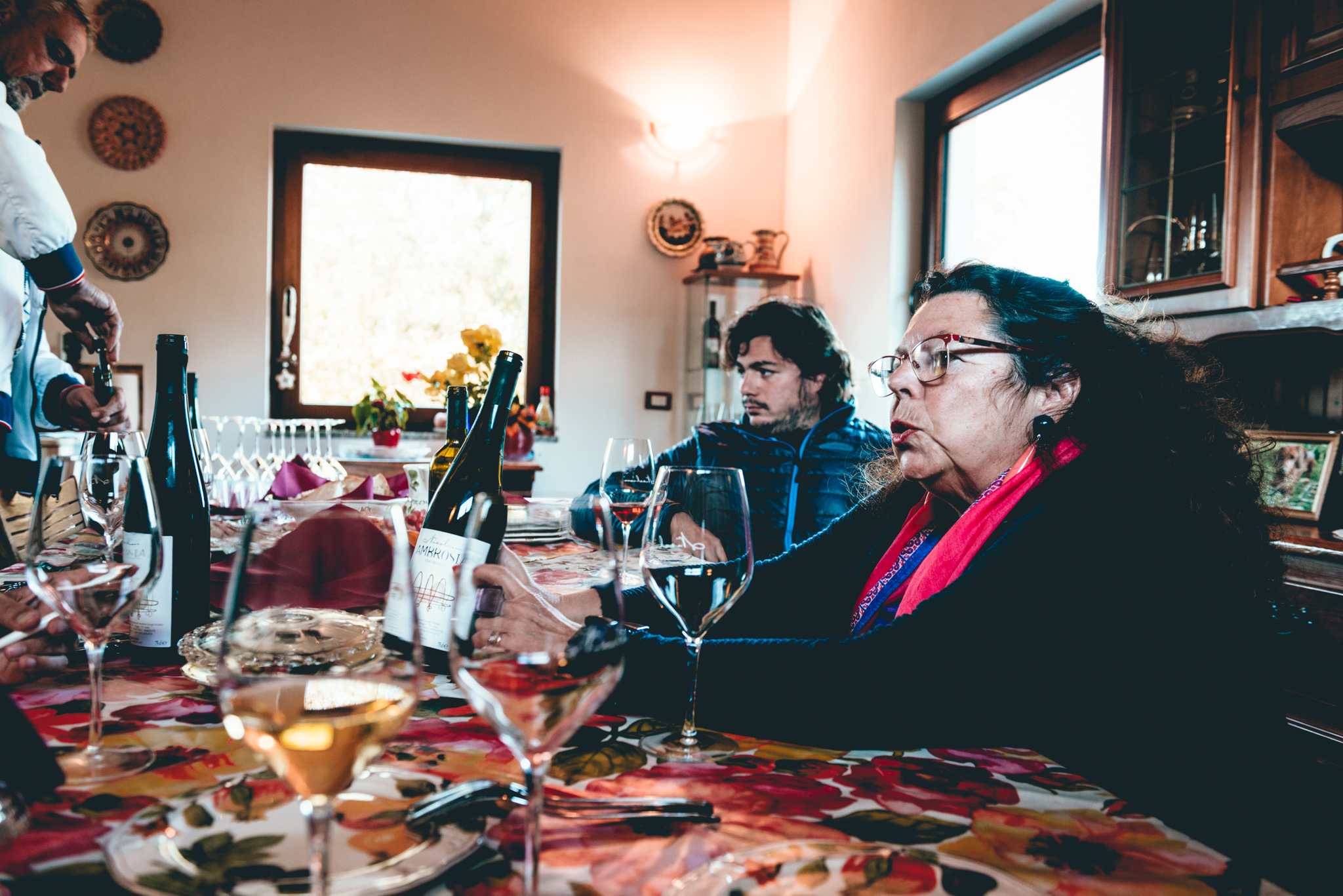
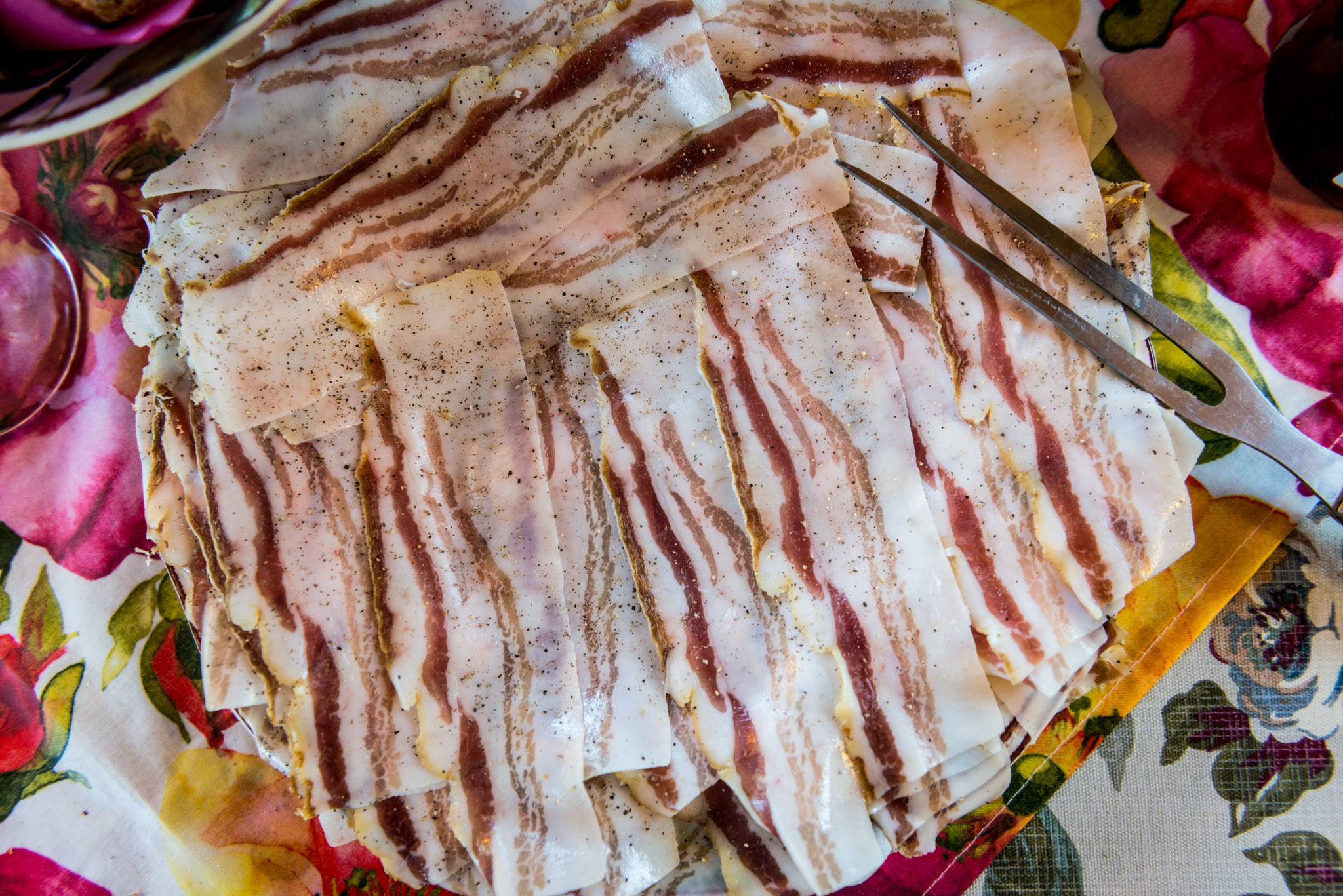
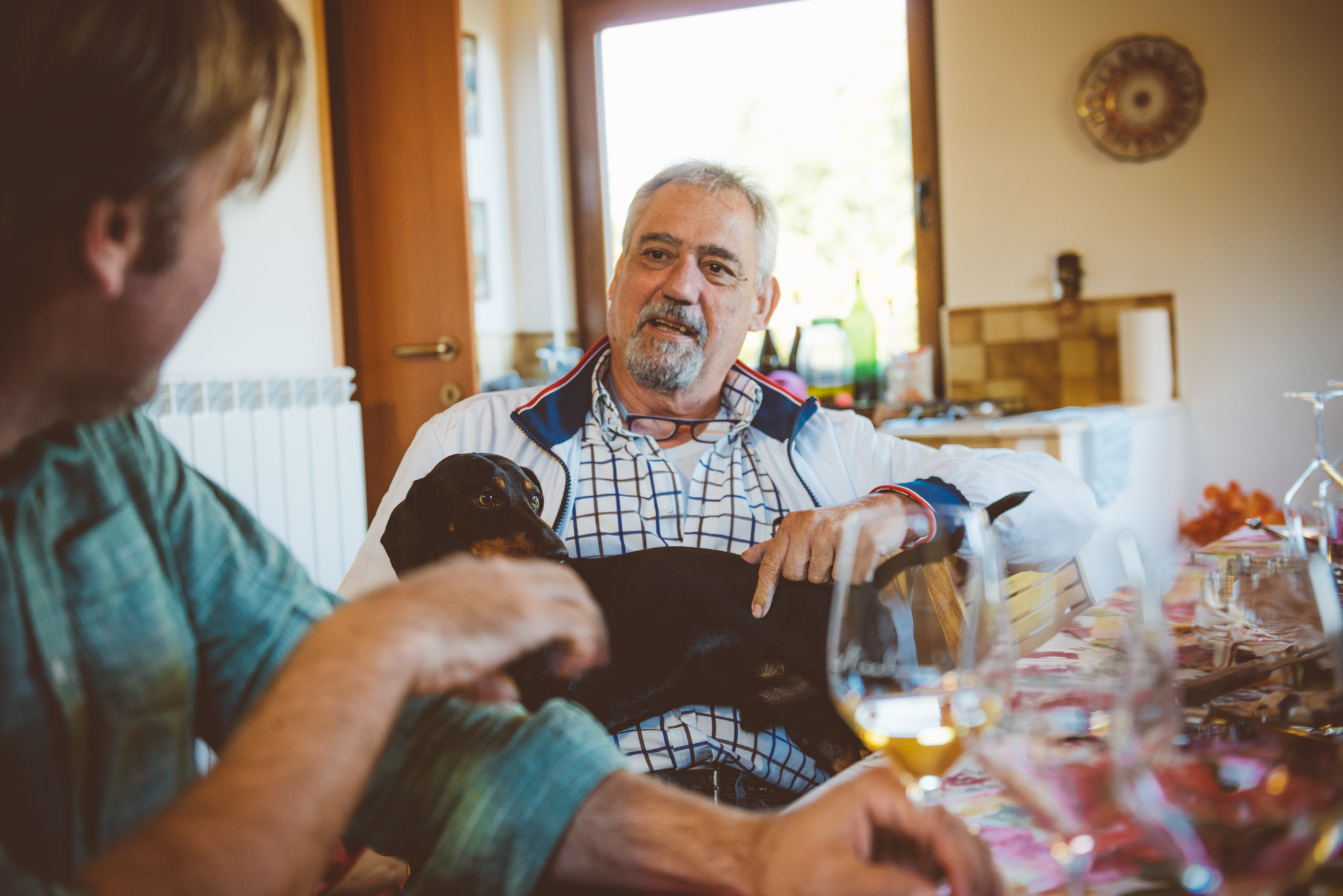
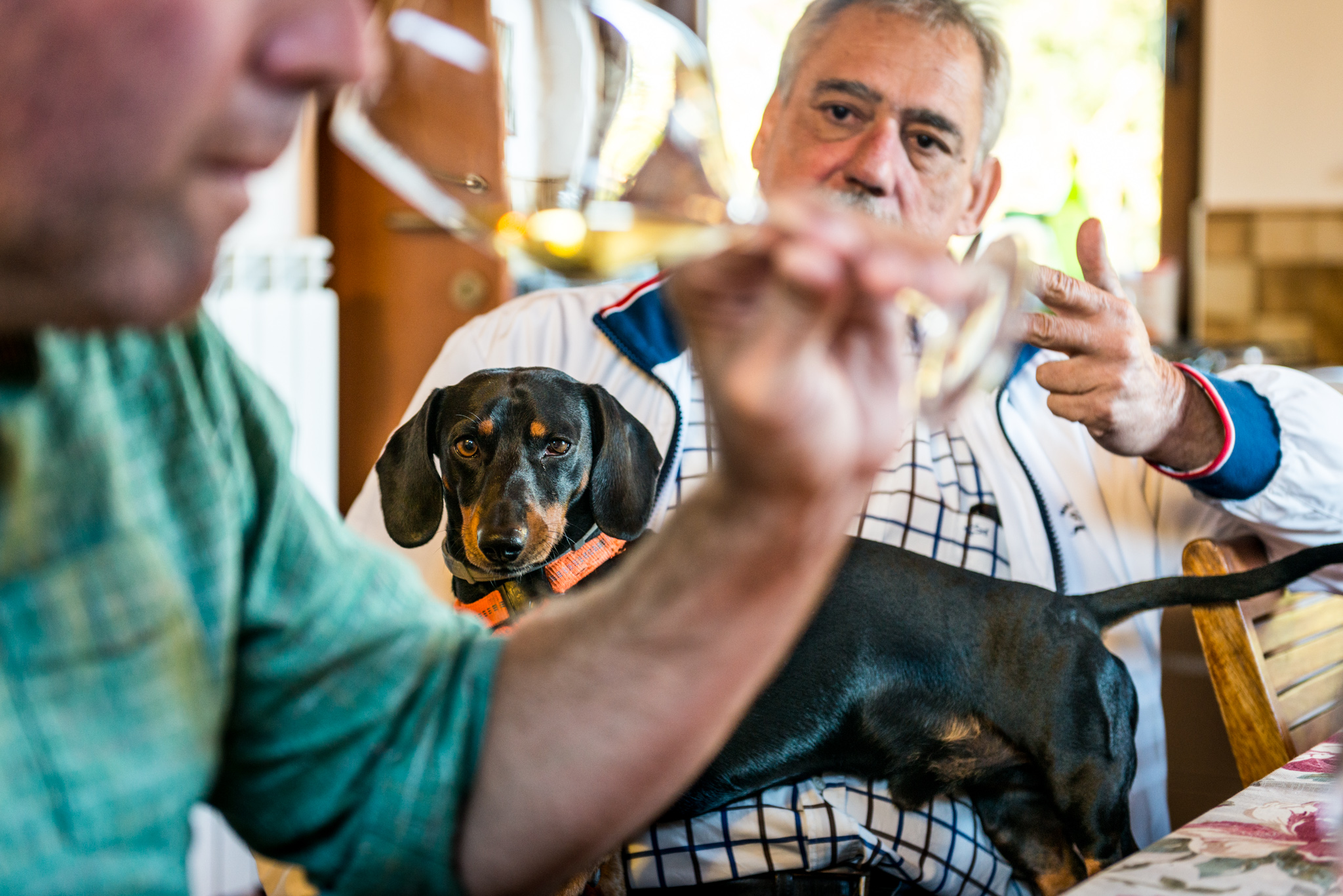
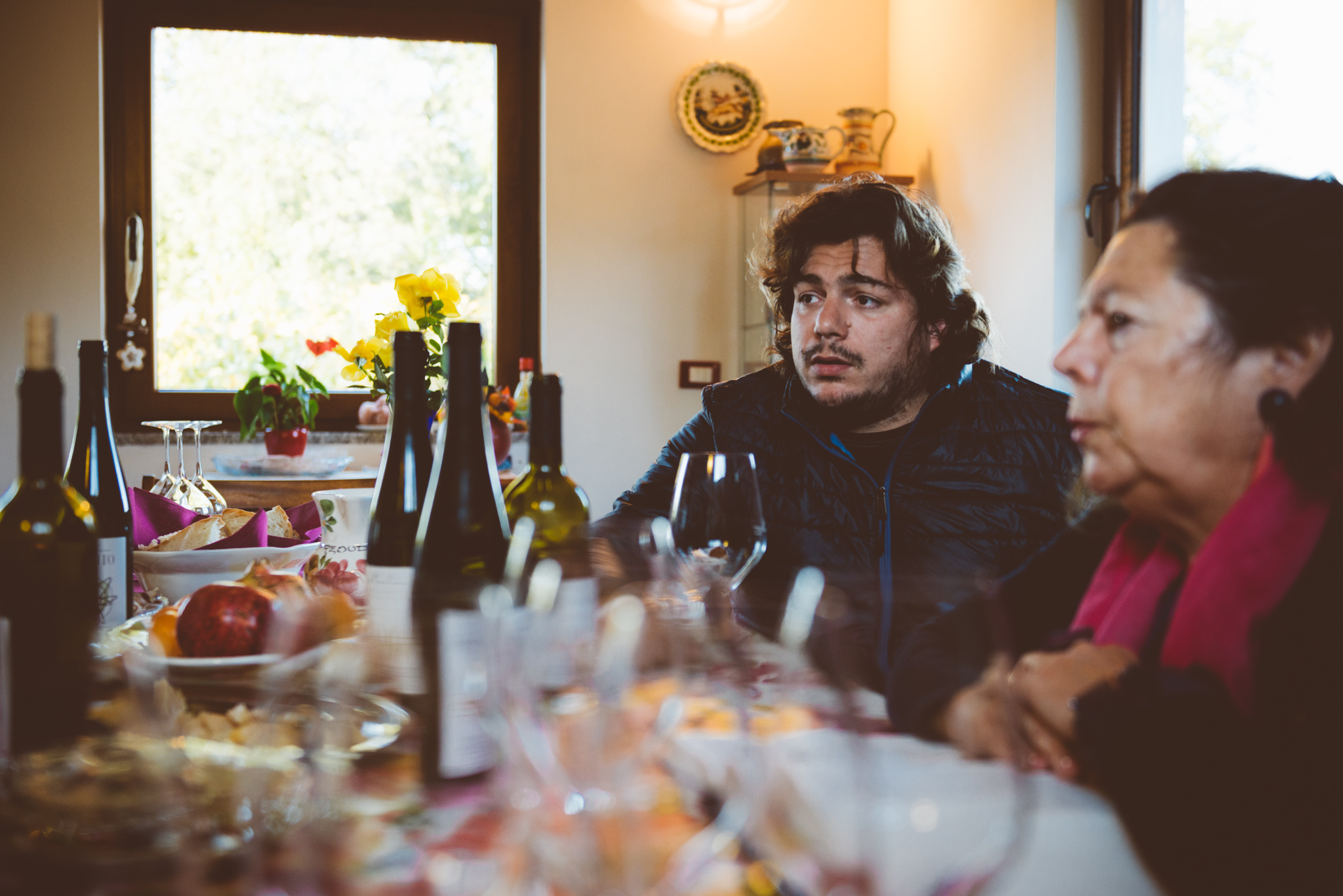
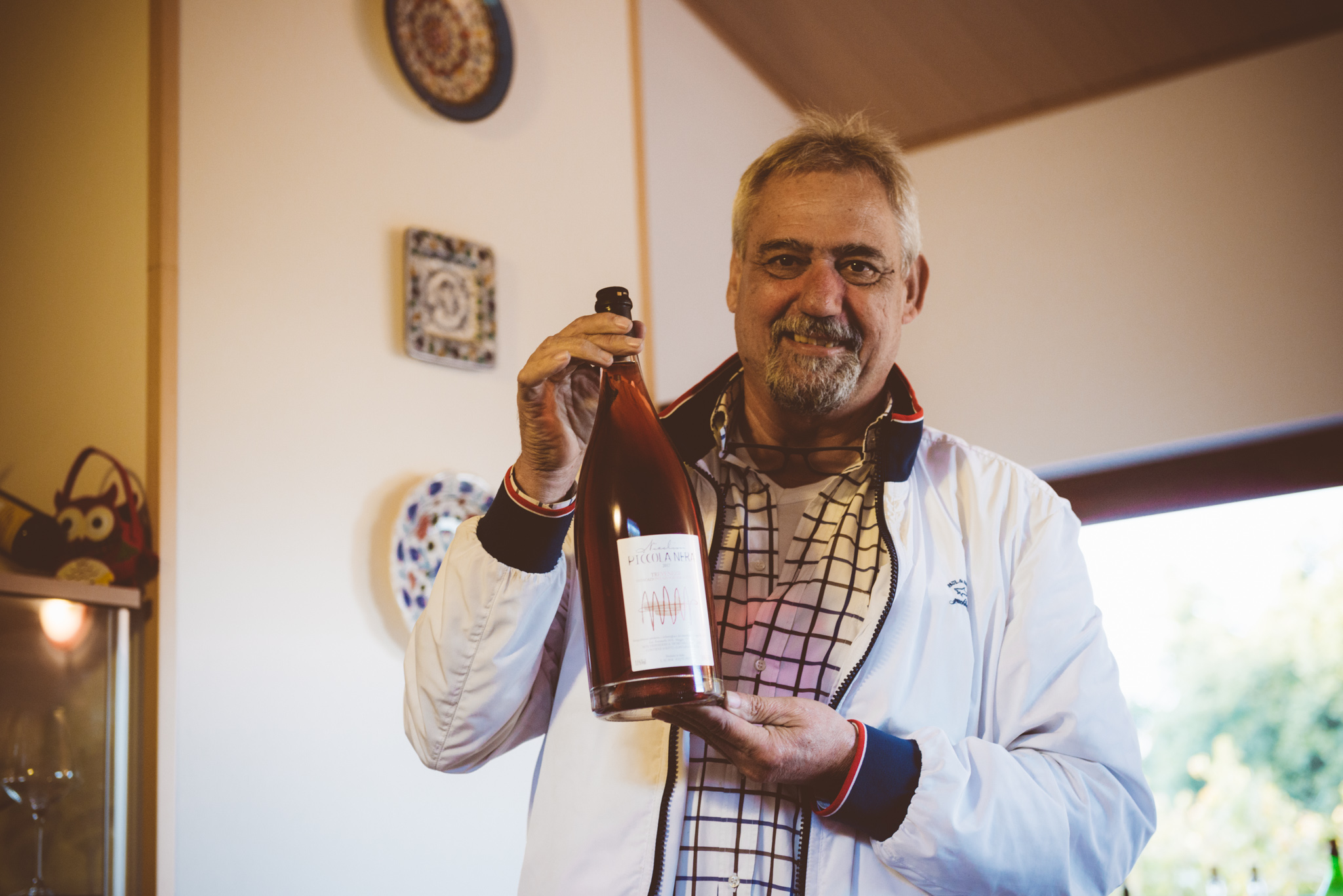
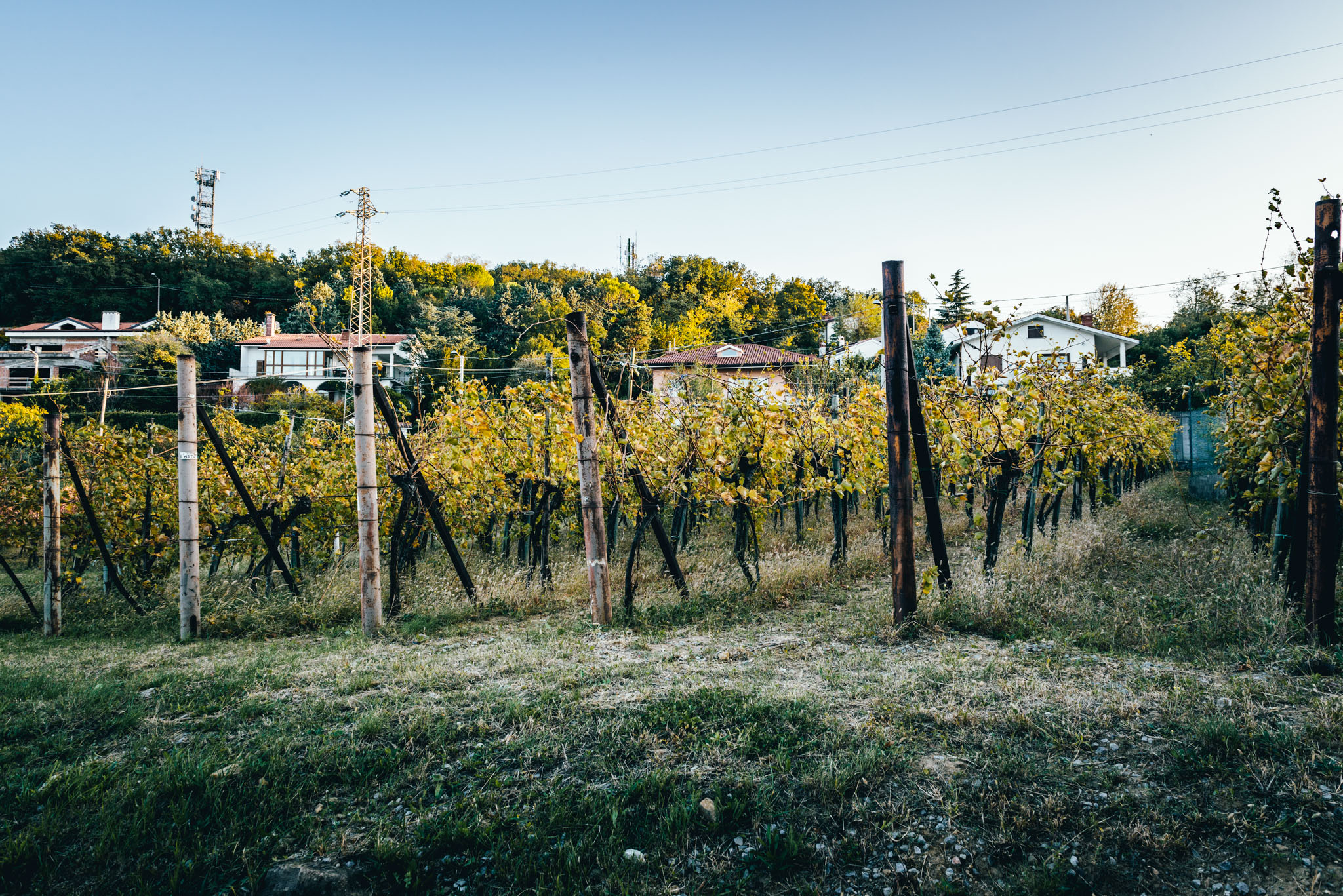
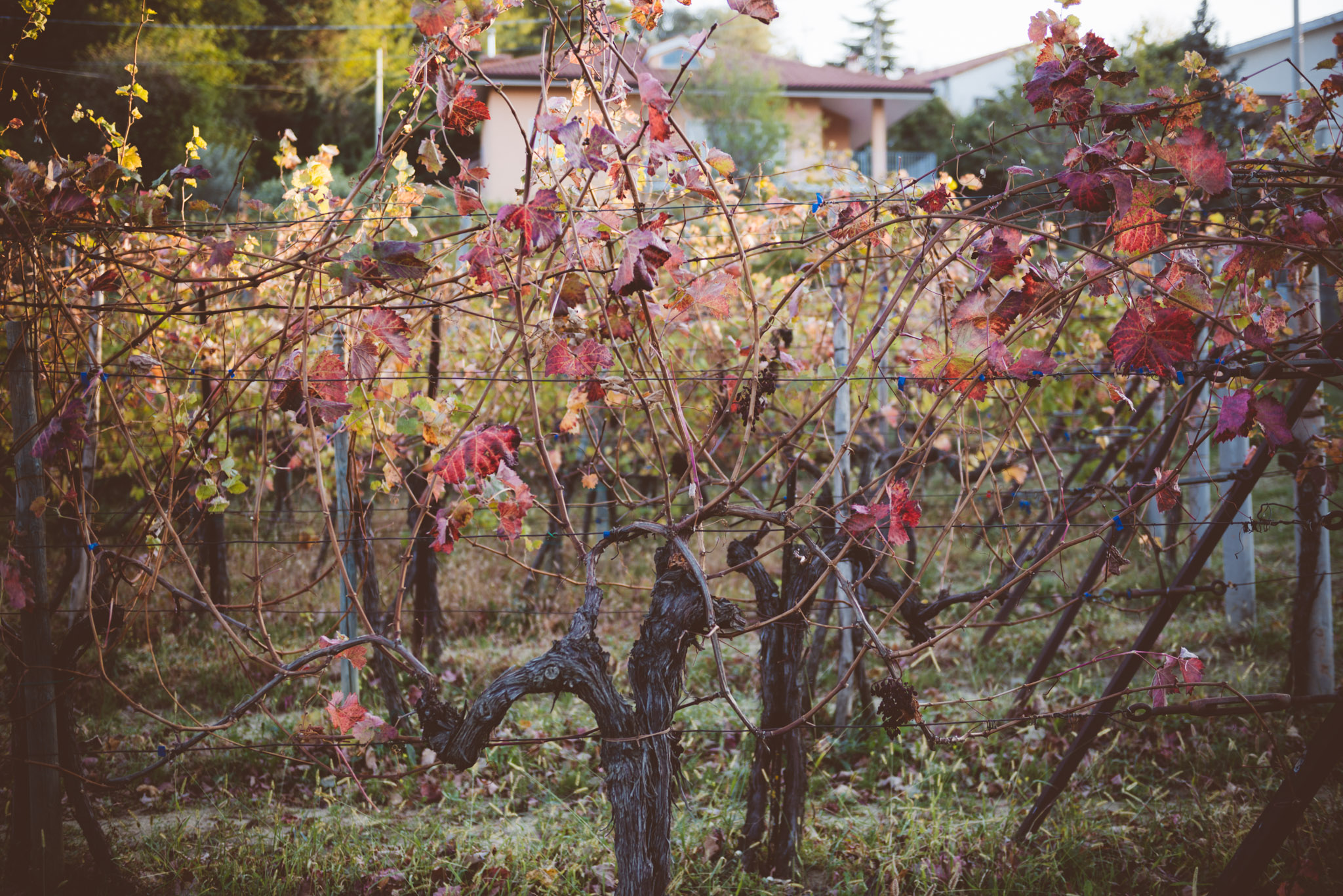
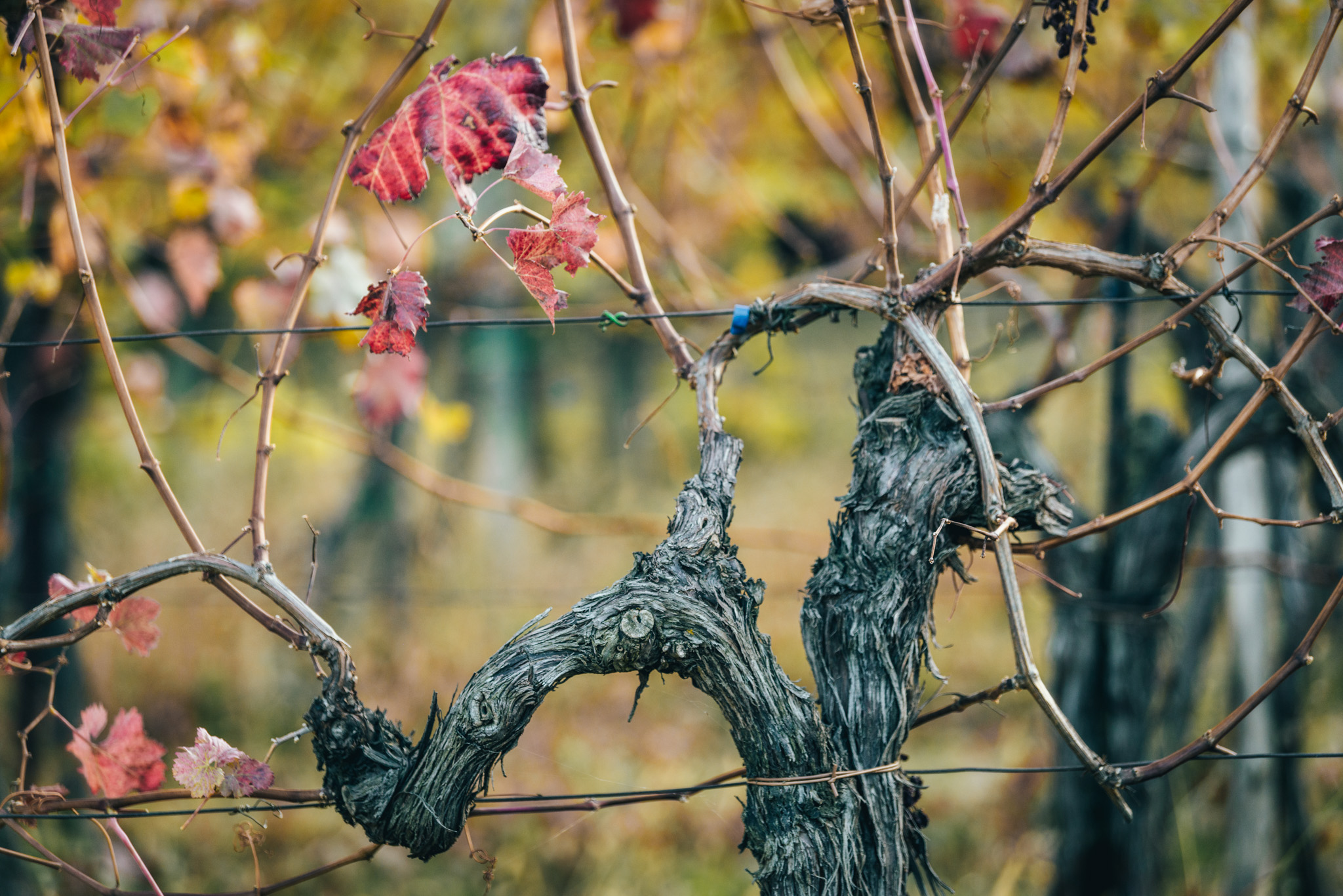
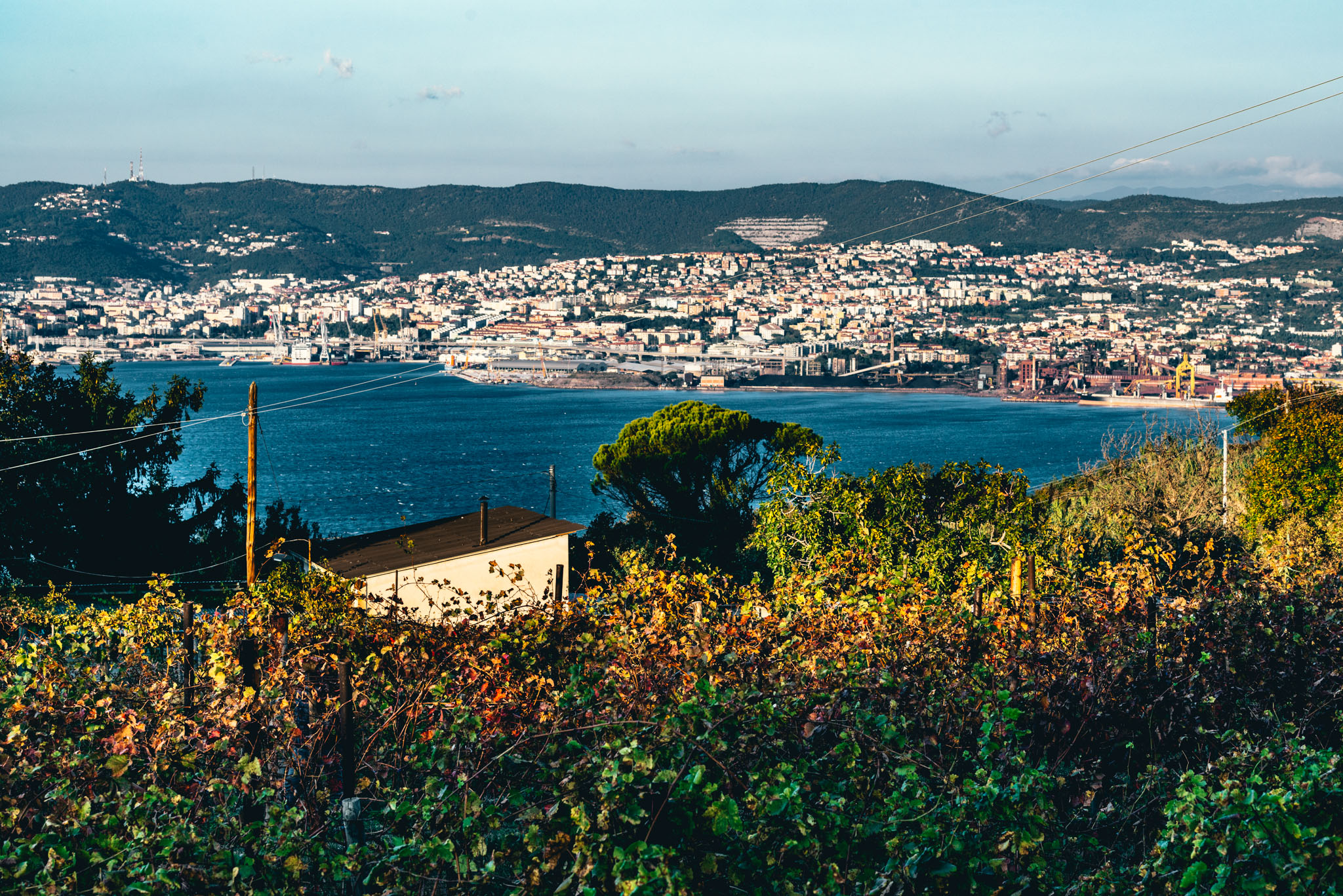
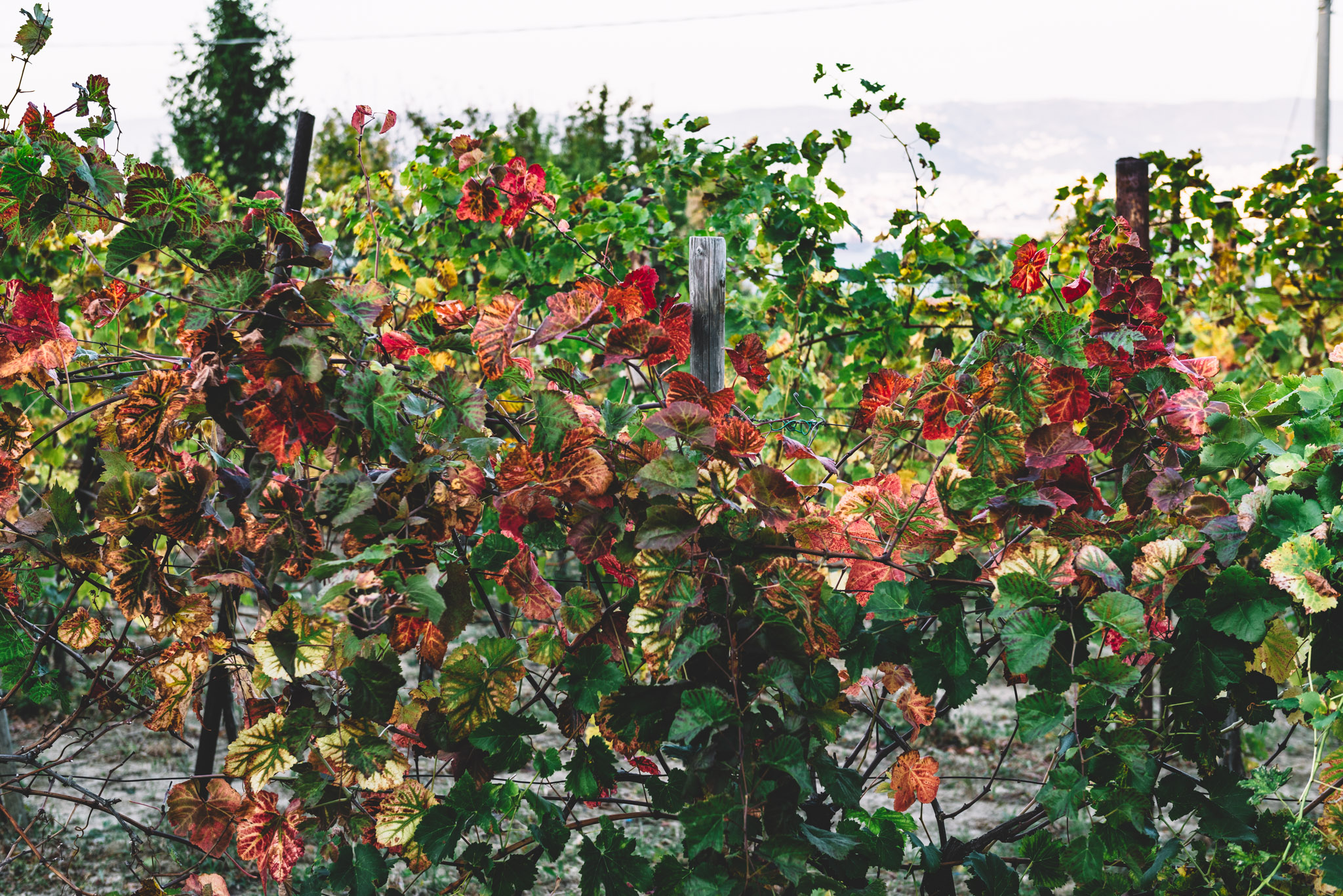
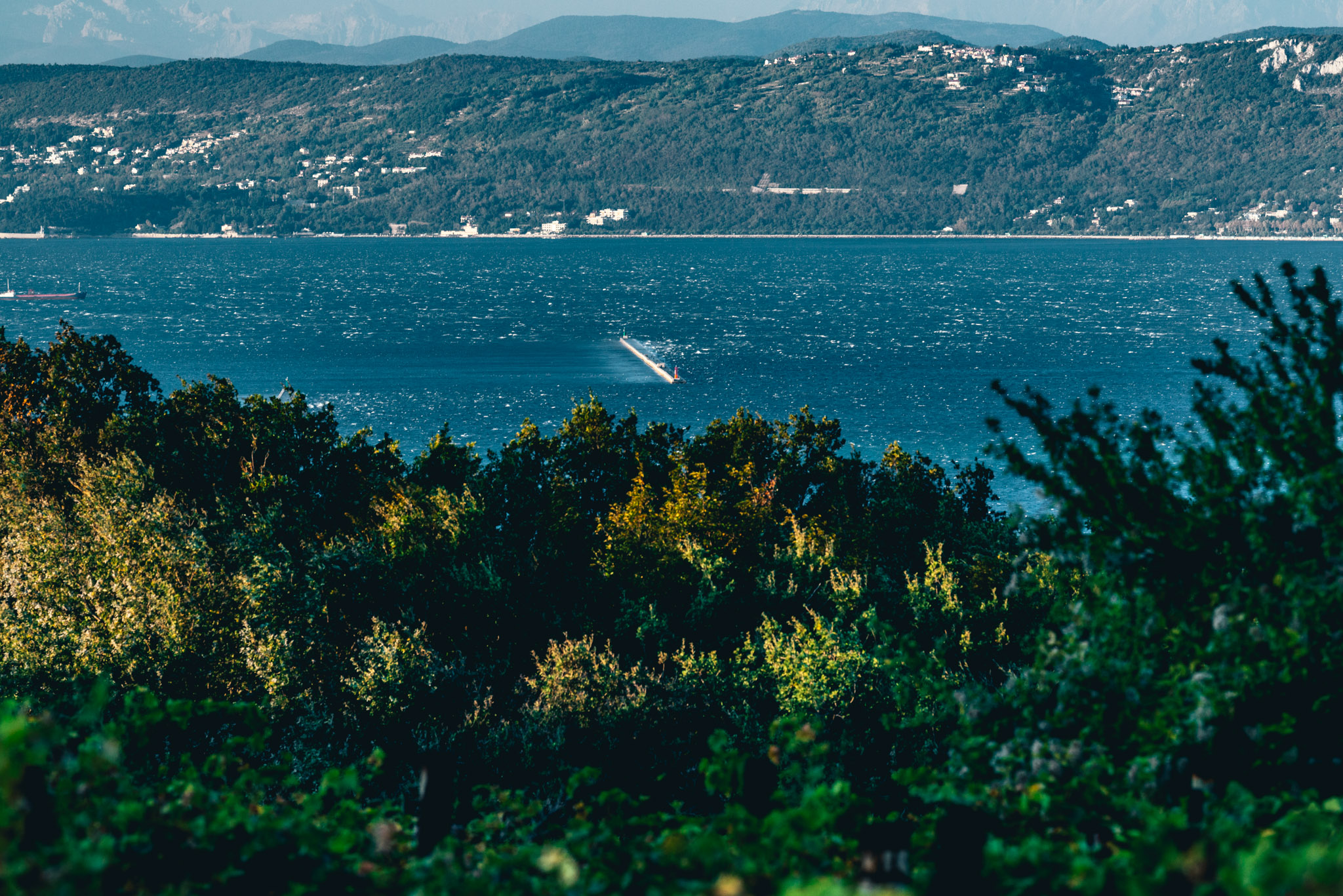
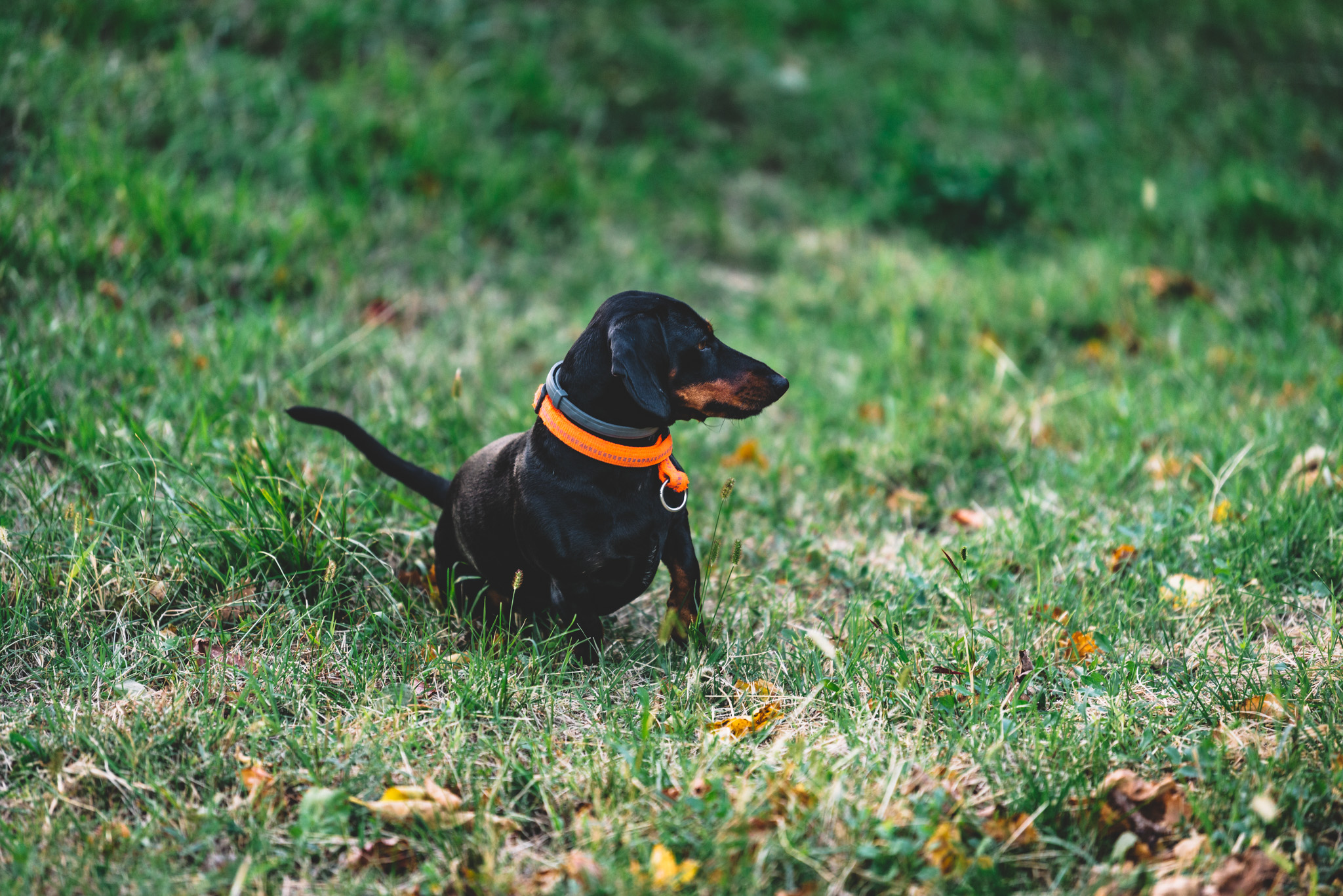
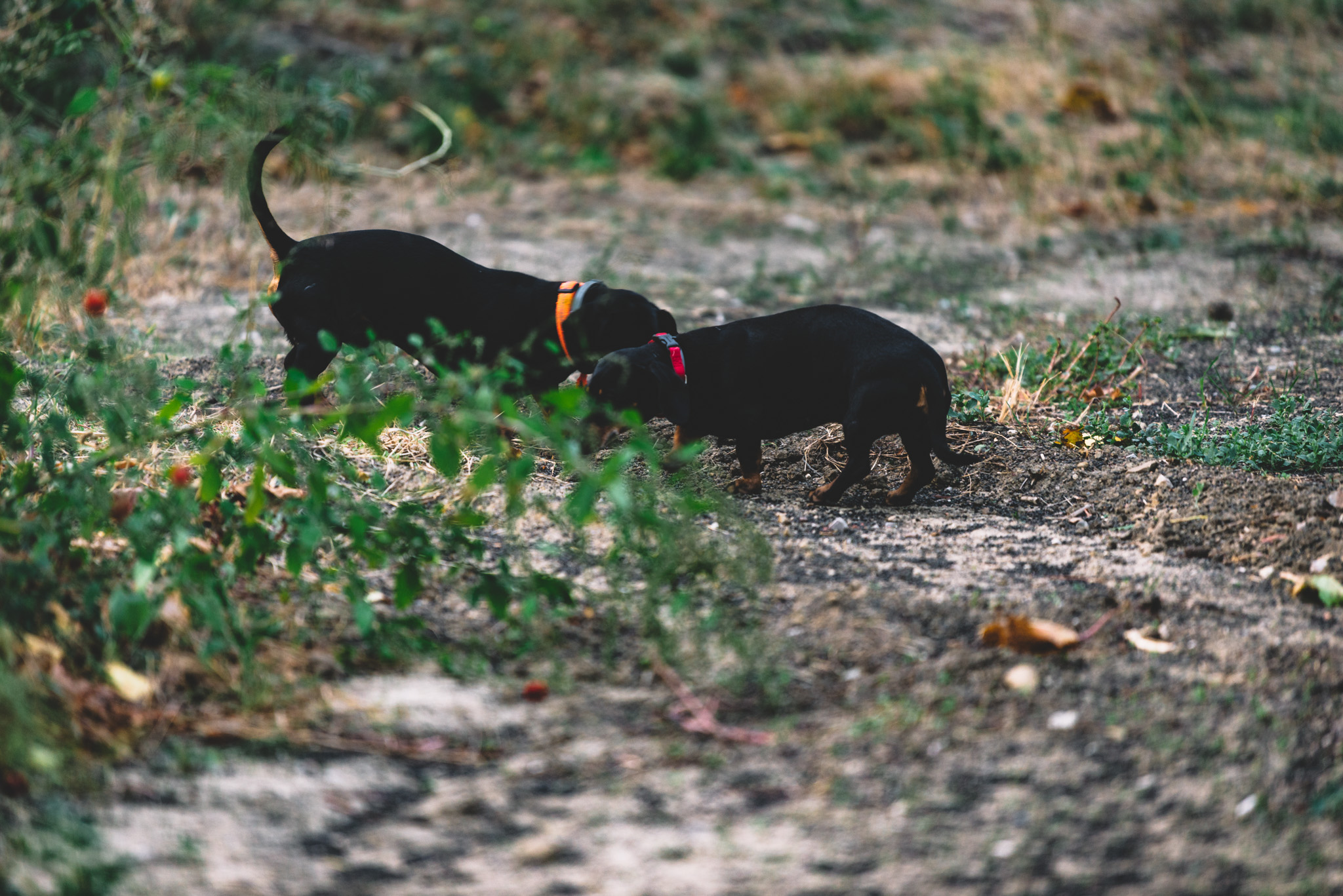
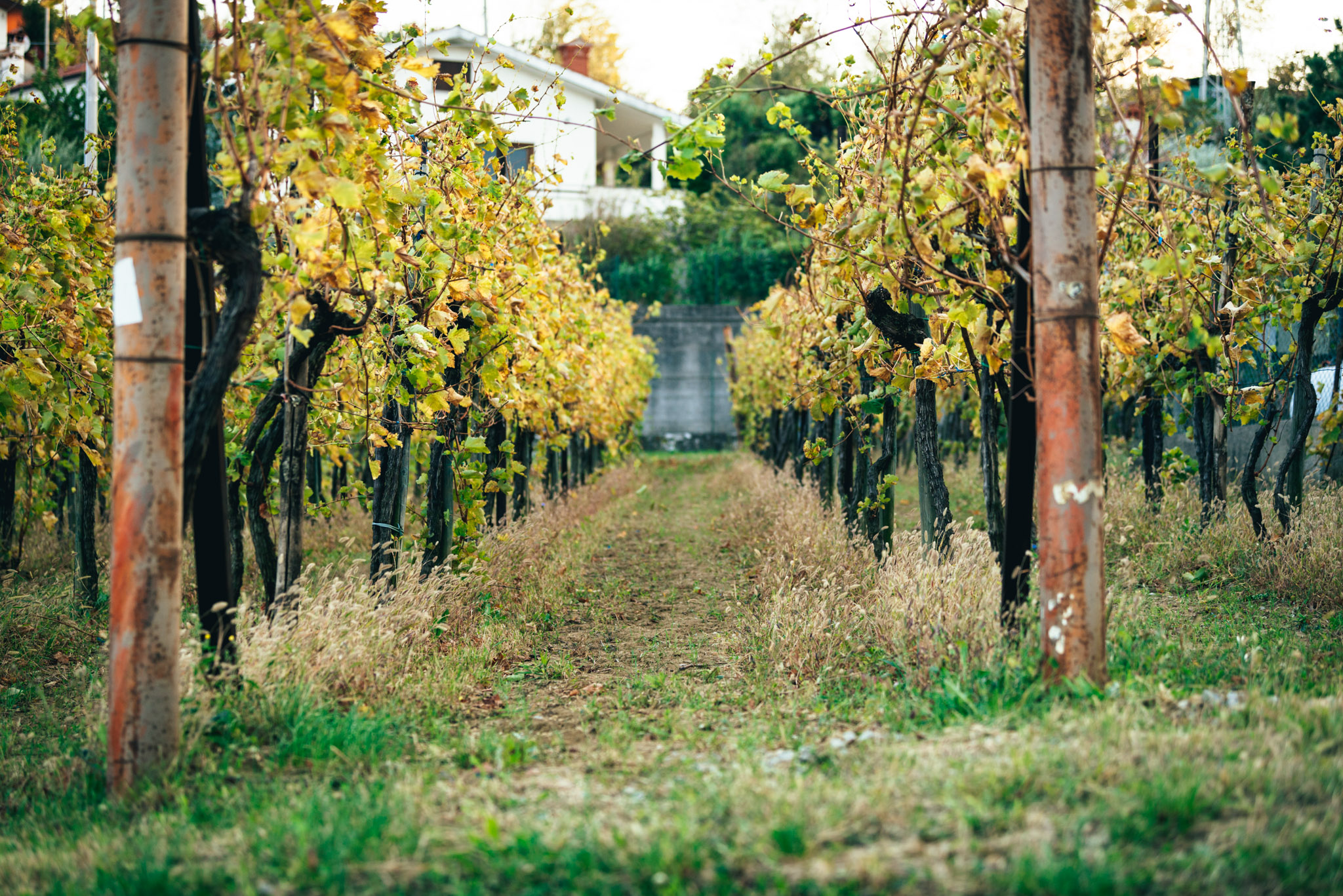
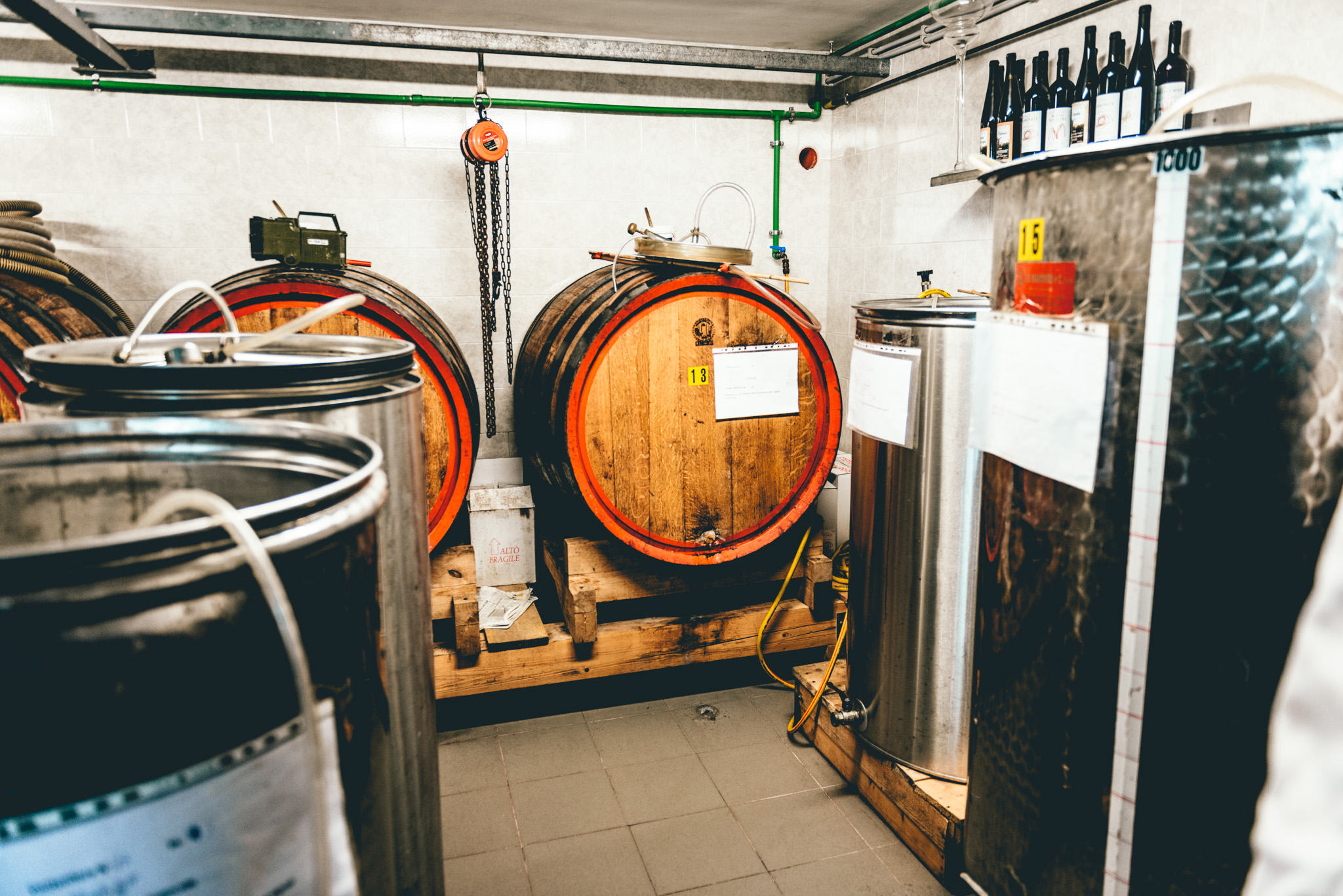
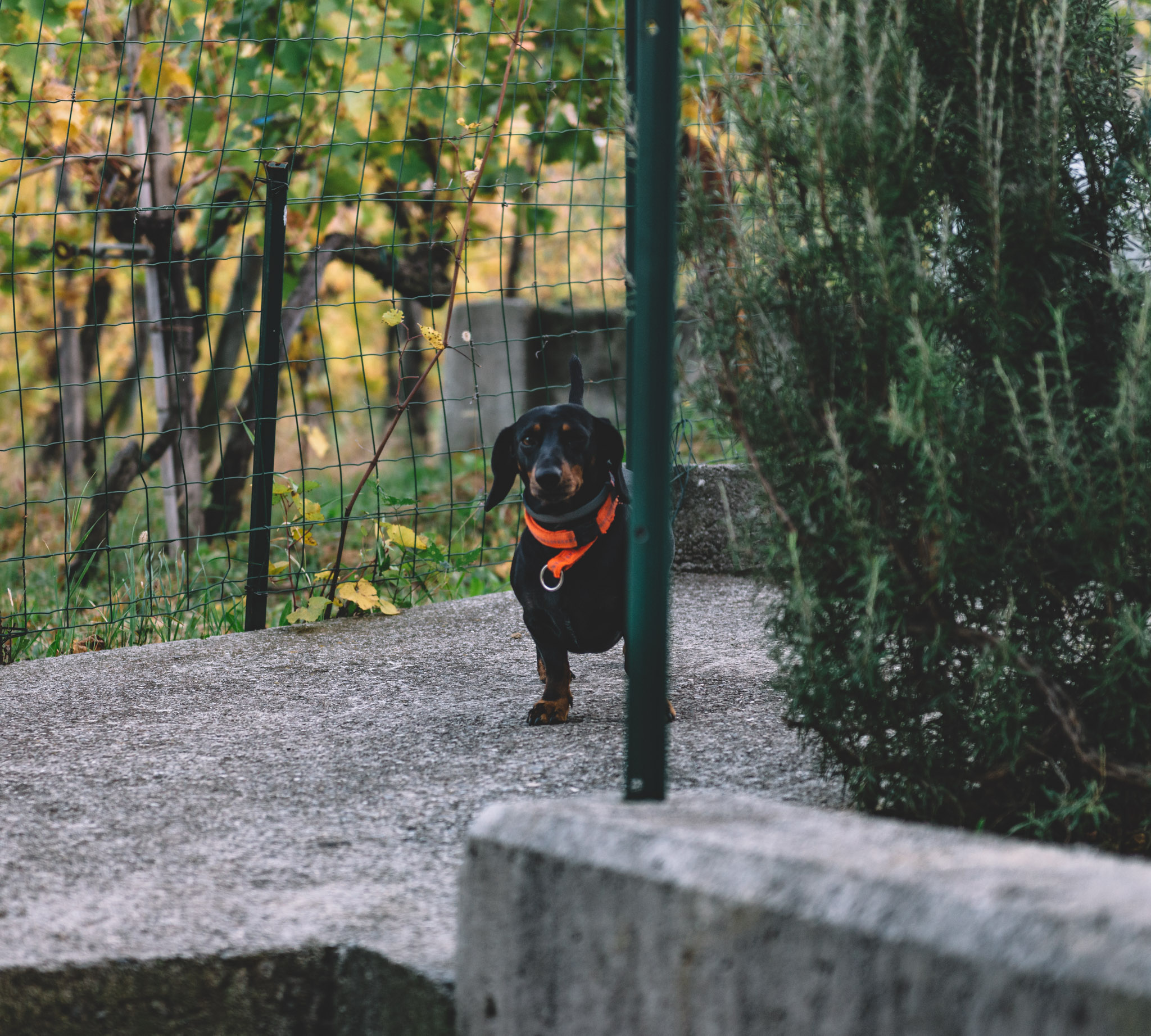
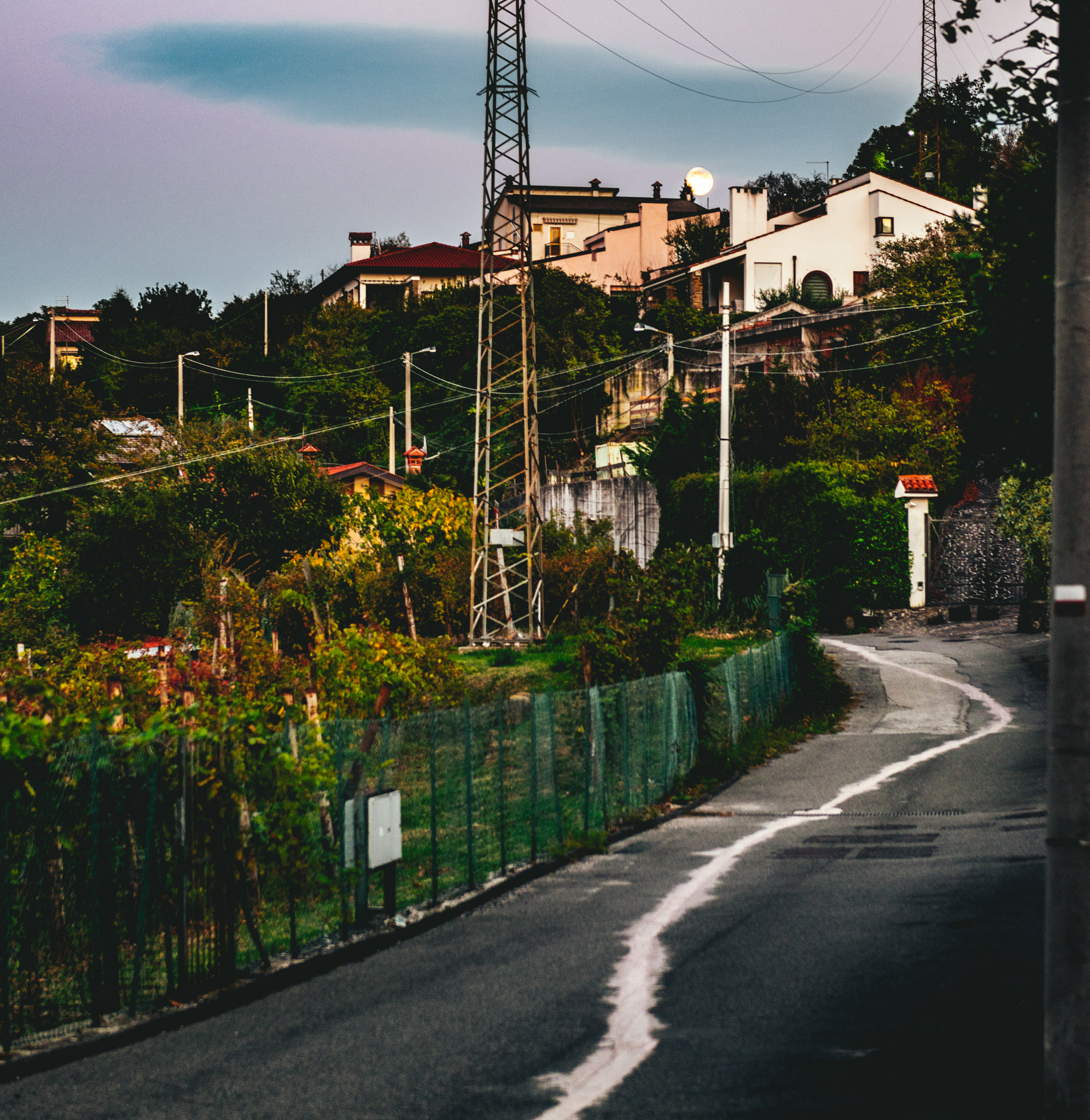
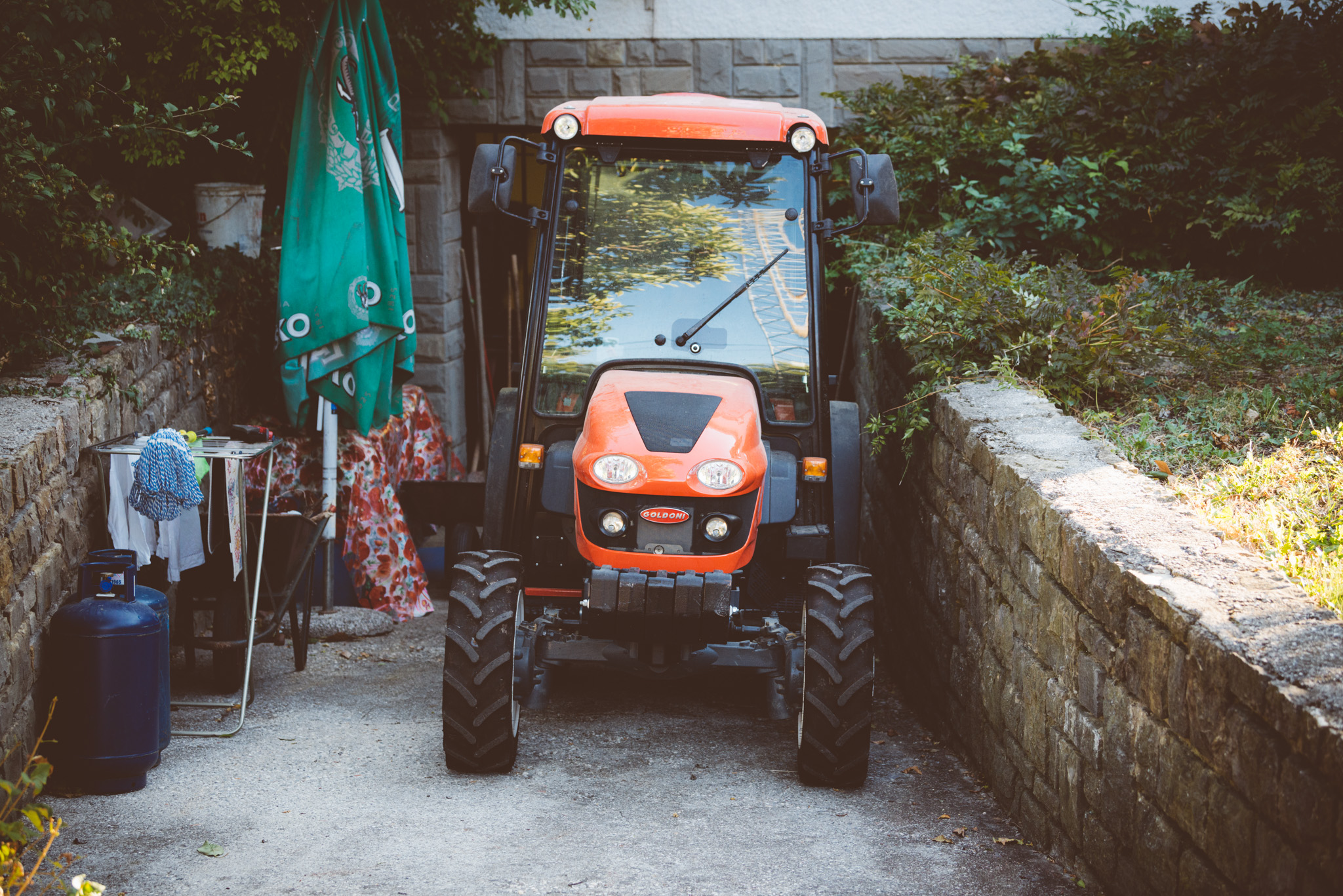
Nicolini
Who: Giorgio & Rossana Nicolini and their son Eugenio Nicolini
Where: Muggia (Friuli Venezia-Giulia, Italy)
What grapes: Malvasia, Borgogna Nera, Piccola Nera, Vitovska & Refosco
Key facts: This is the smallest estate we import. Two hectares, one of which is planted to vines. The land is worked exclusively by the family and was inherited from grandparents. Fidelity to old methods and indigenous grapes are the guiding principles at Nicolini.
Website: http://www.nicolinitrieste.com
Nicolini Malvasia Venezia Giulia IGT 750mls
Viticulture: Organic
Soil type: Clay
Elevation: 180m, facing the gulf of Trieste
Grapes: Malvasia Istriana
Method of fermentation: Hand harvested in small baskets, macerated on the skins for 36-48 hours, spontaneous native yeast fermentation, traditional hand-crank press, aged eight months in large oak barrels, bottled unfiltered w/less than 50mg/l of total sulfur
The 2020 Malvasia (14% abv, from the Italian side of the border) is still a little prickly. Giorgio clearly loves this wine. I smell apricots, and sense the presence of the marine sedimentary soil that defines Nicolini’s terroir. — JM
Nicolini Vitovska Venezia Giulia IGT
Viticulture: Organic
Soil type: Clay
Elevation: 180m
Grapes: Vitovska
Method of fermentation: Hand harvested in small baskets. Macerated on the skins for 36-48 hours. Spontaneous native yeast fermentation. All the fruit is crushed in a traditional hand-crank press. The wine is aged eight months in large oak barrels, and bottled unfiltered, w/less than 50mg/l of total sulfur.
Giorgio and Rosanna shipped us a small batch of the cultiest of all the cult wines. In Venezia-Giulia, Vitovska is consumed by candelabra light, preferably in a cave or baroque cellar decorated solely with tendrils of phosphorescent mold. Fungus structures masquerade as Spanish moss. Psychedelic melting chandeliers imitate stalactites. Gregorian chants drone from just beyond arcs of flickering light. Beef tallow aromas dull consciousness. It’s 10,000BC. Strange offerings are served. Croatian cheeses. Rare oil-cured mackerel. Possibly a salad. Grilled leeks!! Obscene ribbons of 24-month old Parmesan. You awake by the sea. The wine is gone, and so is your shirt. A freighter sends waves crashing above the rampart. You pick kelp from your trouser pocket, and stumble into town.
Nicolini Piccola Nera delle Venezie IGT
Viticulture: Organic
Soil type: Clay
Elevation: 180m
Grapes: Piccola Nera
Method of fermentation: Hand harvested in small baskets. Macerated on the skins for 48-72 hours. Spontaneous native yeast fermentation. Crushed in a traditional hand-crank press, then aged eight months in large oak barrels. Bottled unfiltered w/less than 50mg/l of total sulfur.
The 2020 Piccola Nera is fresh, bright, and fruity. This wine remains my favorite, and it’s improving with each passing vintage. The perfume is haunting, compelling. After two weeks traveling across northern Italy from Milan to Slovenia and back to (almost) Torino, this is the red I think about every day. A magic hillside facing Trieste across the shimmering Adriatic. It’s Vienna by-the-sea, a place of undimmed Austro-Hungarian architectural magic, and the setting for Zeno’s Conscience, my favorite book written in Italian that wasn’t written by Natalia Ginzburg. Drink Piccola Nera with freshly fried fish (the smaller the better) or fresh pasta, either filled with game, or with herbs in butter sauce. — JM
Nicolini Refosco Venezia Giulia IGT
Viticulture: Organic
Soil type: Clay
Elevation: 180m
Grapes: Refosco
Method of fermentation: Hand harvested in small baskets, macerated on the skins for 48-72 hours, spontaneous native yeast fermentation, traditional hand-crank press, aged eight months in large oak barrels, bottled unfiltered w/less than 50mg/l of total sulfur
Eugenio has a baby. Well, an 18-month old. I haven’t been to the farm in a while! It remains hard to reach. The one-lane tunnel in Muggia is blocked by a stalled vehicle, causing consternation, a detour, and more time to admire the glistening Adriatic. The town and the vines of Nicolini cling to the coast. The land available to farm rises in slivers from the gem blue of the gulf of Trieste and quickly reaches Slovenia. Giorgio Nicolini farms land on both sides of this almost arbitrary border. The bustling port city of Trieste is Austro-Hungarian in architecture, a small Venice, or a seaside Bratislava.
Giorgio and Rossana’s quality of life is admirable. They seem to have everything: a toddler to chase around, enough vines to constitute a real job (they are both retired from desk jobs in Trieste) and a 19th century copper alembic pot still to make tiny-but-legal batches of grappa. Giorgio ages this highly sought-after boutique distillate in either oak or pear wood. The base pomace comes from their Malvasia and Refosco production. In grappa circles Nicolini is a cult, very hard-to-find producer. The whole inventory seems to be stored in two small office cabinets in their basement, sharing space with an ironing board, a lawn mower, some ladders, a Vespa.
The vines are in verdant midsummer health. Sitting under an arbor behind the Nicolini’s home I can see Piccola Nera berries in their first days of veraison, pale lavender clusters still dotted with green. Flowering bushes share space with these vines along the flimsy wire fence separating living space from the most proximate of Nicolini’s tiny vineyards. On the patio side a trio of Dachshunds (Tristan, Brigitta, and Miranda Pressley) spin in frenetic orbits around the garden hose-wielding newest addition to the Nicolini clan. There’s an inflatable pool for kids (and dogs) to splash around in. An olive tree adds shade to the back lawn.
In the July heat, I’m reluctant to venture out from the arbor into sun-exposed vines. I’ve seen a vineyard before. In fact, I’ve seen this vineyard before. Besides, Giorgio is making magic in the kitchen. He’s friends with a local fisherman, a relationship that on this day is benefiting me greatly. The fisherman delivered mackerel, tiny local calamari, and gorgeous, extravagant shrimp caught that morning. Giorgio fried the mackerel whole. The meat is flavorful without being unpleasantly oily. Rossana explains that July is the perfect season for mackerel. When caught later in the year, some of the coarse/aggressive flavors attributed to the fish emerge. Calamari is something I’ll avoid in most contexts, a haphazardly prepared barely-seafood. On this veranda overlooking the Adriatic I taste calamari that is so perfect, bright, tender, saline, I wish I could take this fleeting food experience home with me to share, to save the reputation of a maligned, abused antipasti.
Giogio’s shrimp are magnificent. They deserve an essay to themselves. Sauteed in wine, tomatoes, and herbs, head-on, of course. A circle of hell exists for people who don’t suck the juices of these once-in-a-lifetime, perfect crustaceans. In Italy I am often humbled by the craft, the attention to detail, and the unassailably excellent ingredient sourcing that goes into meal preparation. Over the course of a long lunch, a beautiful, hard-to-leave afternoon of conversation, catching up, sharing memories, stories, hopes for the future, and large amounts of wine (and water, Giorgio likes a spritz) Rossana and Giorgio brought to the table the distilled, essential flavor of their place. Magic.
To the wines.
The 2020 Piccola Nera is fresh, bright, and fruity. This wine remains my favorite, and it’s improving with each passing vintage. 12.5% abv, 360 bottles available. The perfume is haunting, compelling. After two weeks traveling across northern Italy from Milan to Slovenia and back to (almost) Torino, this is the red I think about every day.
The 2020 Ambrosia is 13% abv Malvasia Istriana grown in Slovenia, a scant kilometer from the cellar. It smells of baking spices and apples. The wine is clean and good, like spring water. Luckily, Ambrosia is perfect for fish.
The 2020 Malvasia (14% abv, from the Italian side of the border) is still a little prickly. Giorgio clearly loves this wine. I smell apricots, and sense the presence of the marine sedimentary soil that defines Nicolini’s terroir.
For us, these wines will always be a labor of love. This is not a commercial endeavor. This is a miniscule family farm, run by two lovely, passionate people and their son, who has a day job. We’ll never get more than a few dozen cases of wines from their tiny overcrowded cellar. We won’t make any money really importing these precious bottles. But we’ll do it for the love of being alive, and the understanding that the flavors of this place, Istria, on the edge of eastern Europe and the intersection of a dozen cultures and cuisines, needs to remain, to survive, and be shared.
